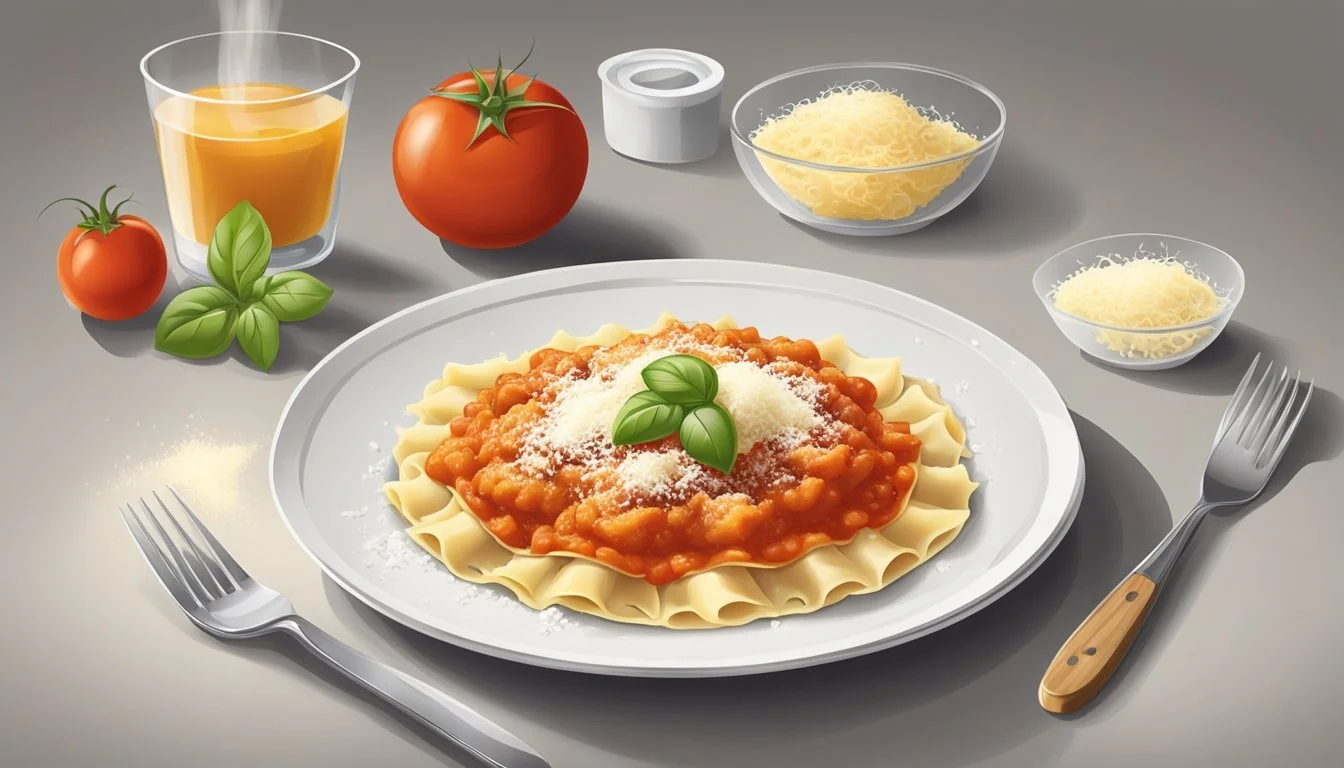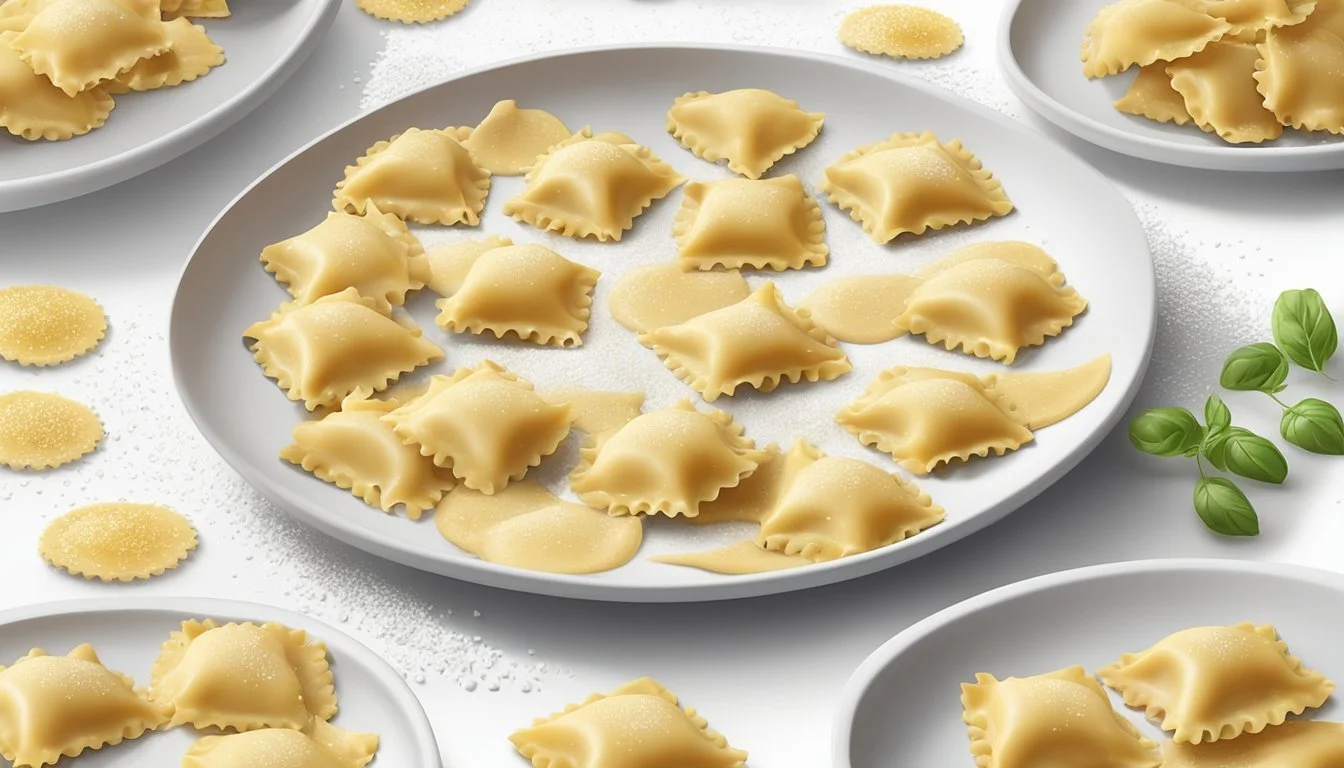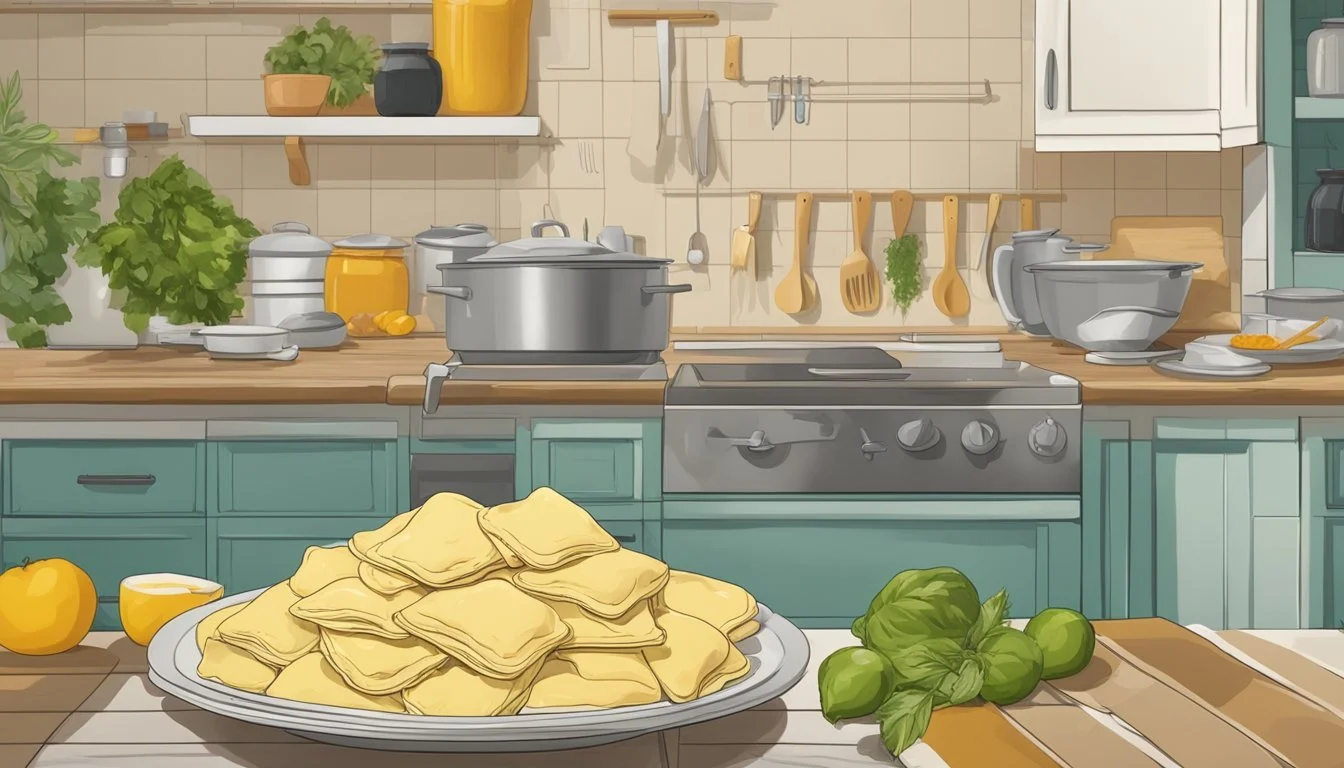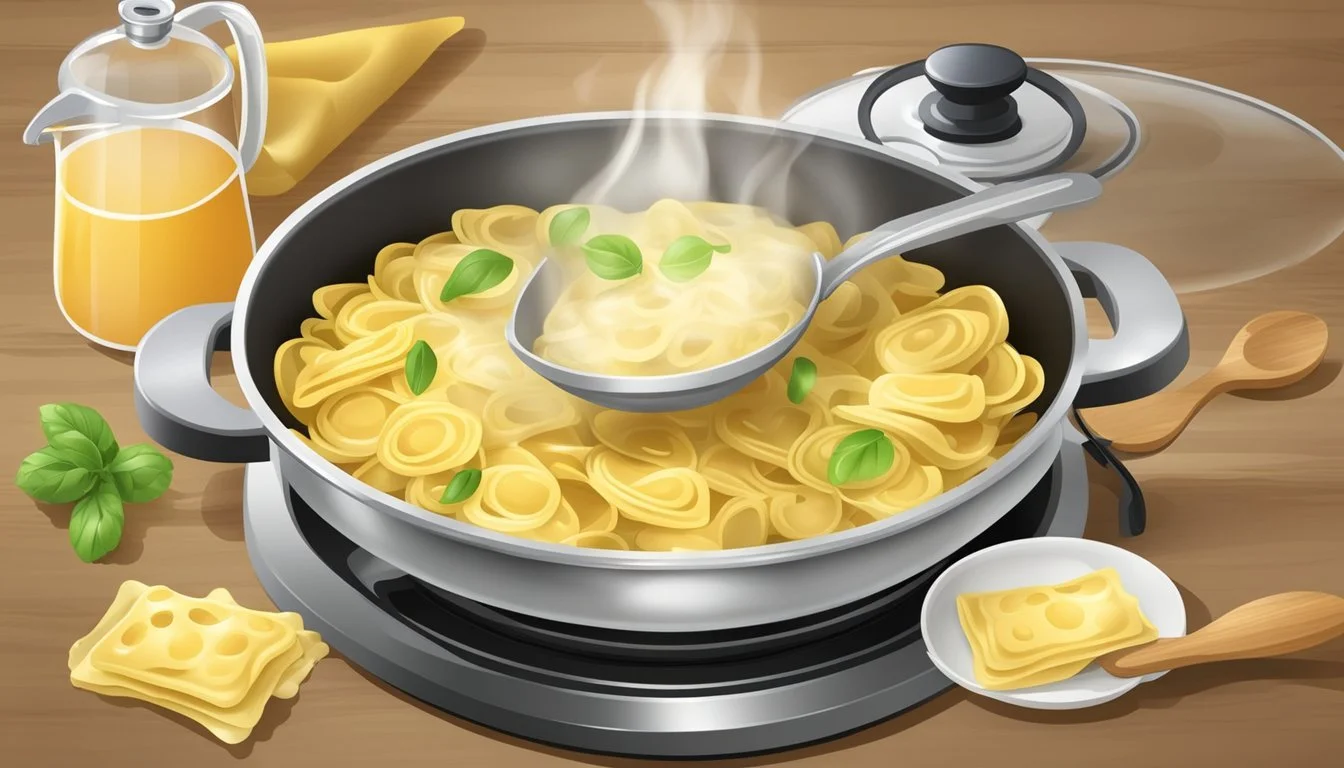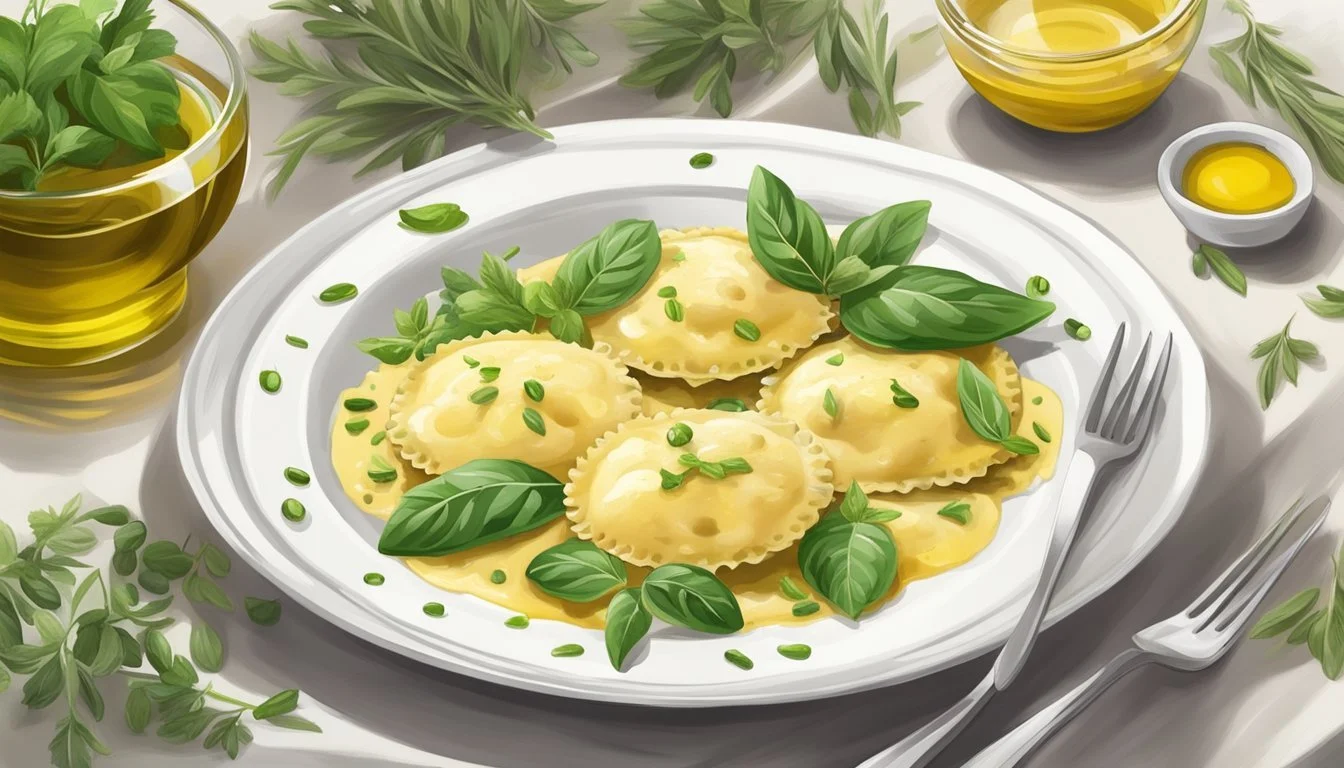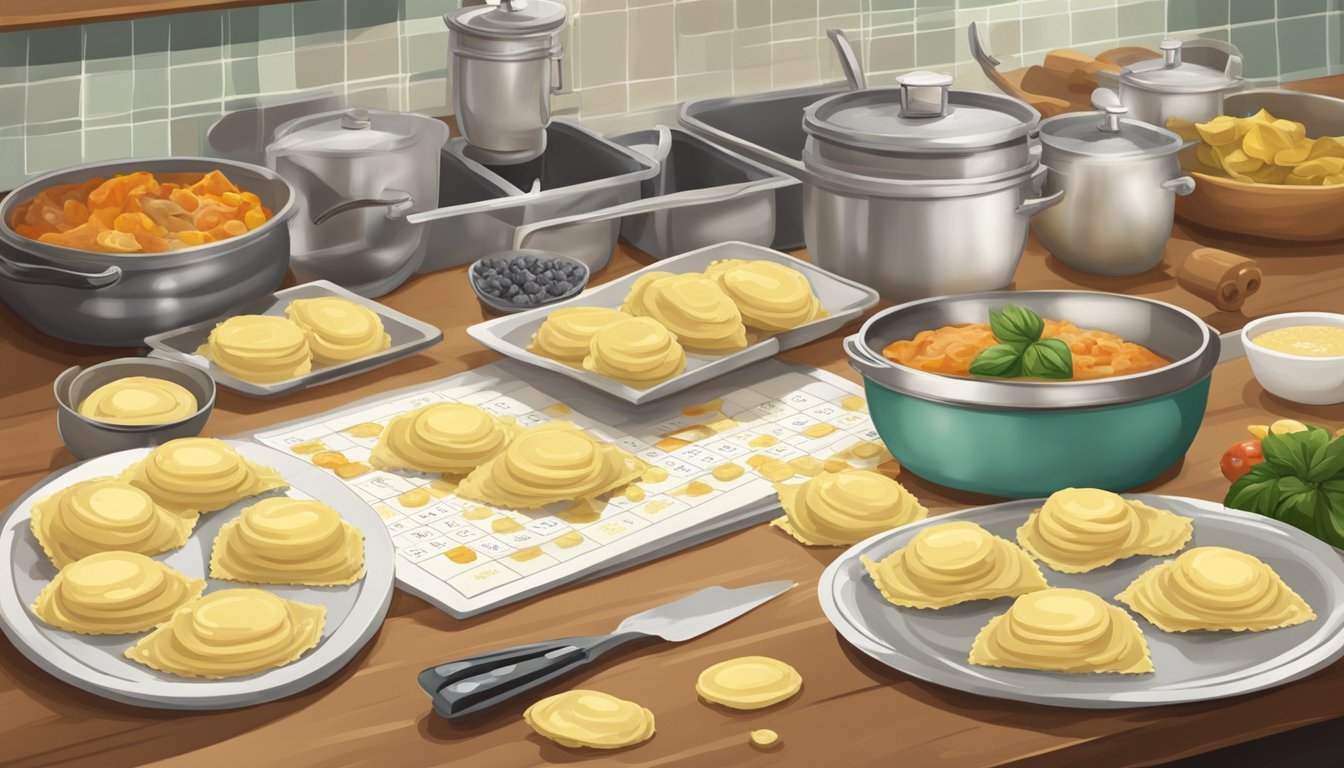How Long Does Freshly Prepared Ravioli Last?
Shelf Life and Storage Tips
Freshly prepared ravioli, a beloved Italian staple, offers a delectable combination of tender pasta (What wine goes well with pasta?) encasing a variety of fillings, from rich cheeses to savory meats. Determining the shelf life of fresh ravioli is essential to savoring its quality and ensuring food safety. When kept in the refrigerator, fresh ravioli typically remains safe to consume for 3 to 5 days. It is important to store them properly in their original packaging or an airtight container to maintain optimal freshness.
For those looking to extend the life of their ravioli, freezing presents a viable option. Properly stored in the freezer, fresh ravioli can last up to 2 months without significant loss of taste or texture. This method of preservation is ideal for those who wish to prepare ravioli in advance or take advantage of bulk purchasing. It's crucial, however, to adhere to storage guidelines to ensure the ravioli retains its intended flavor profile and structural integrity when eventually cooked and served.
Understanding Ravioli Freshness
When assessing the freshness of ravioli, one must consider both visual and olfactory indicators. The shelf life of fresh ravioli is finite, and recognizing the signs of spoilage is essential for safe consumption.
Freshness Indicators
Fresh ravioli should have a consistent appearance and texture. The pasta should be:
Color: Evenly colored without any discoloration.
Texture: Firm to the touch and should not stick together.
If packaged, the expiration date on the ravioli serves as a guide for its expected fresh period. Fresh ravioli typically can be refrigerated for 2 to 3 days. If one chooses to freeze their ravioli, it should be placed in an airtight container or freezer bag. When frozen at a consistent 0°F, ravioli maintains its best quality for up to 8 months.
Spoilage Signs
Several signs indicate that ravioli are no longer fresh and should not be consumed. They include:
Appearance: Discoloration or visible mold growth is a clear indicator of spoilage.
Texture: If the ravioli become slimy or overly soft, they may be bad.
Off Odor: Any unpleasant or sour smell is a strong sign that the ravioli have spoiled.
Flavor: A sour or otherwise off flavor is a tell-tale sign of spoiled ravioli.
Once cooked, ravioli should be refrigerated within two hours to prevent spoilage and typically last for 3 to 5 days in the refrigerator. If ravioli is left at room temperature for more than 2 hours, it should be discarded.
Proper Storage Techniques
Freshly prepared ravioli can maintain its quality and safety when stored with proper techniques. The key to extending its shelf life lies in controlling temperature, moisture, and air exposure.
Refrigeration Best Practices
When refrigerating fresh ravioli, it is vital to keep the temperature below 40°F (4°C) to slow bacterial growth. Ravioli should be placed in the coldest part of the refrigerator, typically the back or bottom shelf, which might provide the most stable environment. Humidity in the fridge should be at a level that prevents drying out without introducing excess moisture that could lead to sogginess.
Do:
Keep at or below 40°F (4°C)
Store on the bottom shelf or the back
Monitor fridge's humidity levels
Don't:
Let it stay out at room temperature for extended periods
Place near the fridge door where temperatures fluctuate
Freezing and its Impacts
Freezing fresh ravioli significantly extends its shelf life, preserving quality for up to 1-2 months. Before freezing, ravioli should be spread on a baking sheet in a single layer, frozen for several hours, and then transferred to heavy-duty freezer bags or airtight containers to prevent freezer burn. Store fresh ravioli in the freezer with clear labeling to ensure proper usage within the optimal time frame.
Do:
Transfer to heavy-duty freezer bags or airtight containers after initial freezing
Label with the date of storage
Don't:
Freeze in bulks where pieces stick together
Leave in the freezer beyond recommended duration
Airtight Containers for Preservation
Utilizing airtight containers is critical in both refrigerating and freezing ravioli. These containers limit air exposure that can hasten spoilage and protect the pasta from absorbing odors. Especially in the refrigerator, it helps to lightly dust ravioli with flour to prevent sticking, then place them in the container, ensuring a snug but not compressed fit.
Do:
Use containers that seal tightly
Dust with flour if refrigerating
Don't:
Use loosely covered containers or those that do not seal properly
Overfill containers which can cause ravioli to deform
Shelf Life of Ravioli
When it comes to fresh ravioli, its lifespan is considerably affected by whether the package is opened and the storage conditions. Storage in the fridge or freezer can extend its usable period, helping ensure the pasta remains safe to eat and of good quality.
Unopened vs Opened Package
Unopened fresh ravioli has a shorter shelf life than many expect; typically, it remains good for consumption for 2 to 3 days when refrigerated. Once opened, ravioli should be consumed quickly, ideally within this timeframe, as it does not keep significantly longer after opening.
Refrigerated Ravioli Lifespan
Fresh ravioli that is refrigerated in its original packaging or an airtight container can last:
2 days if it remains unopened
3 to 5 days for cooked ravioli, presuming it is placed in the refrigerator within two hours of cooking.
One must ensure that the refrigerator temperature is set below 40°F to slow down bacterial growth and preserve the ravioli's quality.
Frozen Ravioli Duration
For those looking to store fresh ravioli for a longer period, freezing is an excellent option. Frozen ravioli can last for:
1 to 2 months if it is fresh and placed in a freezer bag or airtight container.
While the frozen ravioli does not last indefinitely, proper storage can maintain its taste and texture for the duration of these months. Remember that the expiration date on the package should be checked to confirm it's still within its shelf life before freezing.
Preparing and Cooking Ravioli
Freshly prepared ravioli offers a delightful culinary experience when cooked properly. The key lies in the boiling process to achieve optimum texture and taking measures to prevent the delicate pasta from sticking together.
Boiling for Optimum Texture
When one is boiling homemade ravioli, the ideal texture is typically 'al dente', denoting a tender but firm bite. Fresh ravioli requires a large pot of boiling water to ensure even cooking. For every quart of water used, one should ensure the temperature is just right so that the ravioli cooks uniformly without becoming mushy or breaking apart. The optimal boiling time for fresh ravioli filled with cheese or vegetables is typically between 1-2 minutes. The filling will influence the exact timing since ravioli with meat may require a slightly longer duration to ensure thorough cooking.
Start with a large pot of water at a rolling boil.
Gently place the fresh ravioli into the water.
Boil for 1-2 minutes or according to the recipe's instructions.
Remove the pasta with care to avoid tearing.
Preventing Ravioli from Sticking Together
To prevent fresh ravioli from sticking together, one can employ a few simple techniques. Adding a teaspoon of olive oil to the boiling water can create a thin barrier around each raviolo. Stirring the pasta intermittently with a wooden spoon or ladle also helps to keep them separated without damaging the pasta.
Add 1 teaspoon of olive oil per quart of water to create a non-stick barrier.
Stir the ravioli occasionally to keep them separated.
Use a slotted spoon or spider strainer to remove them gently from the water.
Reheating and Serving
When one has leftover cooked ravioli, proper reheating is crucial to maintain texture and flavors. Two common reheating methods are by microwave and stovetop, each offering different levels of convenience and impact on the pasta's final quality.
Microwave vs Stovetop Techniques
Microwave:
Time-Saving: Fast and convenient, typically taking only 1-2 minutes.
Texture: Can unevenly heat and potentially make ravioli rubbery.
To microwave ravioli, one should place it in a microwave-safe dish, cover with a damp paper towel to retain moisture, and heat in short bursts, checking periodically.
Stovetop:
Flavor Preservation: Maintains flavors better than microwave.
Texture Management: Offers more control over texture, reducing the risk of rubberiness.
For stovetop reheating, one should gently simmer the ravioli in boiling water for just 30 seconds to a minute or until they are warmed throughout. Alternatively, sautéing in a pan with a bit of butter or sauce can enhance the dish while warming it up.
Maintaining Flavor and Freshness
Reheating should not only focus on the right temperature but also on preserving the ravioli's delicate flavors and texture:
Avoid Overheating: Excessive heat can deteriorate the pasta and its fillings—monitor closely when reheating.
Add Moisture: A sprinkling of water or sauce can prevent drying out, especially in the microwave.
The choice of method depends on individual preference between speed and quality, but gentle reheating on the stovetop generally yields the best results for preserving the integrity of flavors and texture of the ravioli.
Safety Precautions and Foodborne Illnesses
When it comes to fresh ravioli, safety precautions are paramount to prevent foodborne illnesses. Understanding the risks and employing strategies to mitigate them ensures both the safety and enjoyment of the pasta.
Recognizing Foodborne Illness Risks
Foodborne illnesses, often referred to as food poisoning, are serious health risks that occur when food becomes contaminated. Fresh ravioli pose a specific risk because they usually contain perishable ingredients such as cheese, meat, or vegetables which can host bacteria like Salmonella or Listeria if not handled correctly. Spoilage is a clear sign of bacterial contamination, and it is critical to recognize the symptoms:
Changes in color, texture, or odor of the ravioli may indicate spoilage.
The “use-by” date on packaging serves as a guideline to assess the freshness of store-bought ravioli; surpassing this date increases the risk of bacterial growth.
Prevention of Bacterial Contamination
Preventing bacterial contamination begins with proper handling and storage of fresh ravioli. Key measures include:
Maintaining a clean preparation environment reduces the risk of introducing pathogens to the ravioli.
Fresh ravioli should be refrigerated at temperatures below 40°F (4°C) to slow bacterial growth and consumed within 2-4 days of purchase or preparation.
Storage Instructions:
Method Temperature Duration Refrigeration Below 40°F (4°C) 2-4 days after purchase Freezing 0°F (-18°C) or below Up to 8 months
Any fresh ravioli left at room temperature for more than two hours should be discarded to minimize health risks, as bacteria multiply rapidly at room temperature.
By adhering to food safety protocols, one significantly diminishes the potential for foodborne illness from fresh ravioli.
Maximizing Ravioli Longevity
Proper storage and an understanding of dates are crucial to maintain the best quality and freshness of ravioli. Adherence to sensible preservation strategies ensures that both unopened fresh ravioli and leftovers remain safe to consume and delicious.
Best Before and Expiry Dates
Unopened fresh ravioli should be kept in the refrigerator and often has a best before or expiration date indicated on the packaging. One should consume it within 2 to 3 days past this date, when it has been stored properly in the fridge.
Handling Unopened and Leftovers
To handle unopened fresh ravioli, one needs to:
Store it in its original packaging to avoid exposure to air.
If opened, transfer the ravioli to an airtight container or plastic bag.
Sprinkle with flour or cornmeal to prevent sticking.
After cooking, leftovers should be:
Stored in the refrigerator within two hours of cooking to avoid the growth of harmful bacteria.
Kept in an airtight container, they can last for 3 to 5 days in the refrigerator.
Discarded if left at room temperature for more than two hours to prevent foodborne illnesses.
Never store fresh ravioli in the pantry or at room temperature as it encourages the growth of mold and degrades freshness. If longer preservation is needed, freezing the ravioli is an option, which can extend the shelf life for 1 to 2 months.
Variations of Ravioli and Their Shelf Lives
The shelf life of ravioli can vary significantly based on whether it is homemade or store-bought, as well as the type of ingredients used. Understanding these differences is key to ensuring the ravioli is consumed while it's fresh and safe to eat.
Fresh Homemade vs Store-Bought Types
Homemade Ravioli
Homemade ravioli, typically made with fresh, simple ingredients, can last in the refrigerator for up to 7 days. Freezing extends its shelf life, keeping it good for 1 to 2 months.
Refrigerated: 3-7 days
Freezer: 1-2 months
Store-Bought Ravioli
Store-bought fresh ravioli generally has a shelf life of 2-3 days in the fridge and can be frozen for 1 to 2 months.
Refrigerated: 2-3 days
Freezer: 1-2 months
Impact of Ingredients on Perishability
The ingredients within ravioli impact its perishability, with cheese and vegetable fillings lasting slightly longer than meat-filled varieties.
Cheese or Vegetable Ravioli
Plain cheese or vegetable ravioli often keeps well in the refrigerator for about 1-2 days after opening.
Refrigerated: 1-2 days
Meat-Filled Ravioli
More perishable food options like meat-filled ravioli should be consumed within 3 days when stored properly in the refrigerator.
Refrigerated: Up to 3 days
In all cases, cooked ravioli must be refrigerated within two hours to maintain safety. Ravioli, an iconic Italian cuisine, remains a popular and versatile perishable food that requires careful storage.
Frequently Asked Questions
When handling fresh ravioli, understanding proper storage techniques and spoilage indicators can significantly extend its shelf life and ensure safety and quality.
Can You Freeze Fresh Ravioli?
One can freeze fresh ravioli to extend its edible life. To do this effectively, one should first flash freeze individual pieces on a baking sheet to prevent sticking and then transfer them into airtight containers or freezer bags. Fresh ravioli can remain frozen for 1 to 2 months without a significant compromise in quality. It is pivotal that the pasta dough is sealed properly to avoid freezer burn.
Steps for Freezing:
Spread ravioli in a single layer on a baking sheet.
Place the baking sheet in the freezer until the ravioli is firmly frozen.
Transfer the frozen ravioli to an airtight container or freezer bag.
Label the packaging with the current date before returning it to the freezer.
How to Tell if Ravioli Has Gone Bad?
To determine if ravioli has gone bad, one should look for certain signs on both the fresh and cooked product. Visual cues like the presence of mold or discoloration are the most immediate indicators. Additionally, any unpleasant or sour odors signify that the ravioli is no longer fit for consumption. If the texture of the pasta dough feels unusually slimy or sticky, this is also a sign that the ravioli has spoiled and should not be eaten.
Signs of Spoilage:
Mold growth or discoloration
Off-putting smell
Slimy or sticky texture

